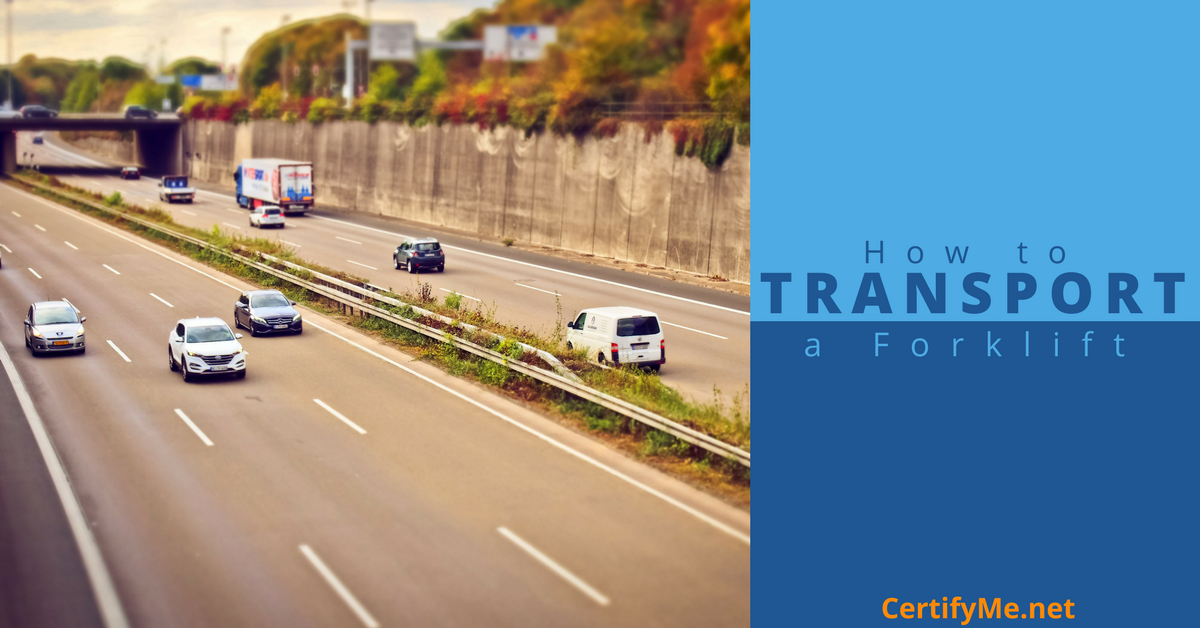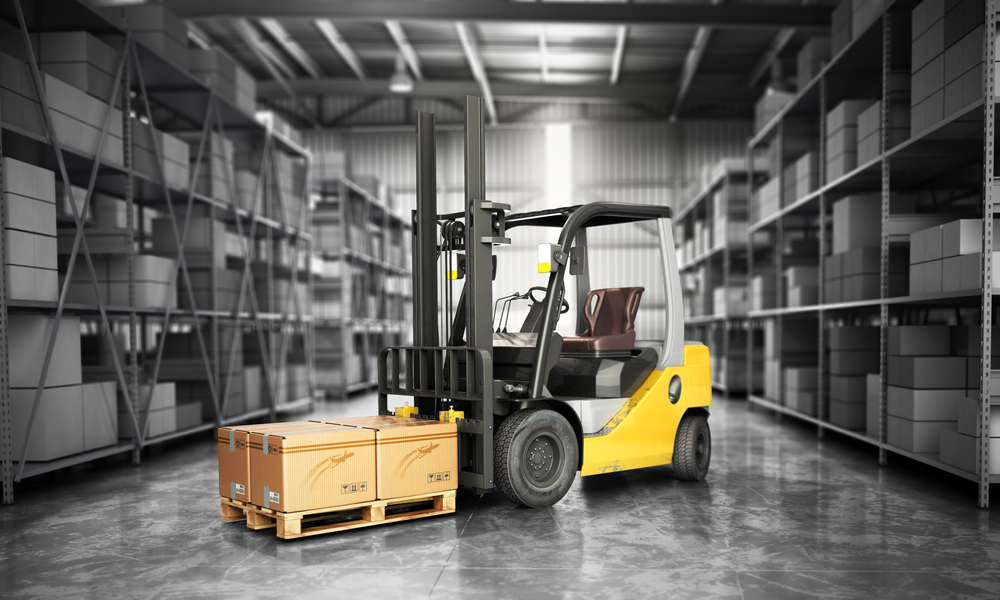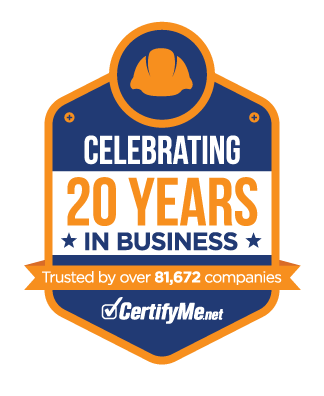Forklift Transport: Ensuring Safe and Efficient Moves
Posted by: admin on March 22, 2025

Why Proper Forklift Transport Matters
Transporting a forklift safely prevents accidents, equipment damage, and regulatory violations. Forklifts are heavy and unwieldy machines that require careful handling to prevent tipping, shifting, or damaging surrounding structures. Whether moving across a job site or transporting to a distant location, proper procedures ensure compliance and reduce risk. Failure to secure a forklift properly can lead to significant liabilities, including OSHA fines and potential workplace injuries.
Understanding the logistics involved in forklift transport is crucial. Weight distribution, route planning, and adherence to safety standards all contribute to a successful move. Operators must be trained in proper loading techniques and securing procedures. Training plays a critical role in mastering these methods, making it essential to consider learning forklift safety for operator expertise. Proper certification ensures legal compliance and enhances overall workplace efficiency and safety.
How to Load a Forklift on a Flatbed or Trailer
Loading a forklift onto a flatbed requires careful execution. The trailer should be parked on stable ground with the parking brake engaged. Proper ramp selection is essential, as using an inadequate or unstable ramp increases the risk of accidents. Drive the forklift onto the flatbed in reverse, keeping the forks pointed away from the transport vehicle to maintain better balance and stability.
Once the forklift is on the flatbed, lower the forks to the deck and tilt them slightly forward to prevent shifting during transport. Wheel chocks should be placed behind each wheel to prevent movement. To secure the load, the forklift must be fastened using heavy-duty chains and binders. Four anchor points should be used to distribute the weight evenly, reducing stress on the transport vehicle and ensuring compliance with safety regulations.
The best way to transport a forklift depends on equipment availability and the nature of the move. A flatbed trailer with a standard five-foot height provides ample vertical clearance, allowing forklifts with forks lowered to fit securely. When space constraints arise, removing the mast and forks enables transport in enclosed vehicles. Operators should assess these options carefully to choose the safest and most efficient method for their specific needs.
Cost Considerations for Forklift Transport
Several factors influence forklift transport cost. Distance, equipment size, and transport method contribute to price variations. Transportation services often charge based on mileage, with longer hauls naturally incurring higher fees. The type of forklift also affects cost, as heavier or oversized models may require specialized transport vehicles.
Additional expenses may include fuel surcharges, permits for oversized loads, and potential storage fees if a delay occurs during delivery. Businesses looking to minimize forklift transport costs should consider pre-scheduling shipments to take advantage of lower rates. Consolidating multiple loads into a single trip can further reduce expenses, making it a cost-effective solution for companies frequently moving equipment between locations.
Safety Guidelines for Forklift Transport
Securing forklift transport requires adherence to safety measures to prevent damage or accidents. Operators must perform a pre-transport inspection to check for mechanical issues and ensure the forklift is in proper working condition. Tires should be inflated to the correct pressure, and any loose components should be secured before loading.
Wheel chocks, chains, and binders prevent shifting during transport. Chains should be fastened to the forklift at designated attachment points, creating secure anchor connections. Binders should be checked periodically during transport to prevent loosening caused by vibrations. Ensuring that the fuel supply is shut off and, for electric forklifts, verifying a full battery charge before departure is essential for safety compliance.
OSHA-compliant procedures dictate that forklifts remain properly fastened with no loose components that could detach during travel. Additionally, operators must be aware of height restrictions along the transport route. Checking clearance under bridges, tunnels, and overhead structures prevents accidents that could damage the forklift and transport vehicle.
FAQs on Forklift Transport
- How much does it cost to transport a forklift? Costs vary based on distance, forklift specifications, and additional requirements. Rates can range from $200 to $1,500, with more extensive equipment typically costing more to transport.
- Do you need special permits for forklift transport? Permit requirements depend on local regulations and the dimensions of the transport vehicle. Oversized loads may require additional documentation to comply with state and federal laws.
- What is the best way to transport a forklift? A flatbed trailer or specialized transport vehicle is the safest and most effective method. Ensuring proper weight distribution and securing the forklift with chains and wheel chocks prevents movement during transport.
How do you secure a forklift for transport? Using wheel chocks, chains, and binders ensures stability. Secure anchor points at each corner of the forklift and tighten all fasteners before departure. Double-check attachments periodically throughout transit to maintain security.

Does Your Business Have a Forklift Safety Training Program?
Forklift transport can be challenging, regardless of whether you do it on your own or hire a forklift towing company. That’s why it’s so important for companies to invest in forklift safety training programs for their employees. Given the risks associated with improper forklift truck transport, it’s simply too expensive not to train workers thoroughly.
Using the aforementioned tips can help you understand how to transport a forklift in a trailer. They are really just the tip of the iceberg, though. Without thorough training, workers may find themselves in over their heads, performing unsafe maneuvers to get the job done. Enrolling employees in a forklift safety training program can help reduce the odds of a workplace accident and keep productivity rates high. It’s one of the best investments a company can make.
CertifyMe: Your Partner in Forklift Safety
Mastering forklift transport improves efficiency and workplace safety, and forklift operators must be trained to follow best practices for loading, securing, and transporting heavy equipment. CertifyMe provides OSHA-compliant certification courses designed for lift operators, offering a convenient way to gain essential skills.
Whether seeking initial training or a certification update, online programs from CertifyMe offer a fast, accessible solution. With flexible course options, businesses can ensure compliance while keeping productivity levels high. Investing in proper forklift safety training reduces the risk of accidents and protects both personnel and equipment. Enhance workplace safety and ensure compliance with expert-led training from CertifyMe today.
Welcome to CertifyMe.net
CertifyMe.net has offered online forklift certification since 1999. With Our Convenient online program. your employess can earn their certification in an hour or less.
Browse Online Certifications:
This low-cost program can be compeleted anytime, anywhere!






